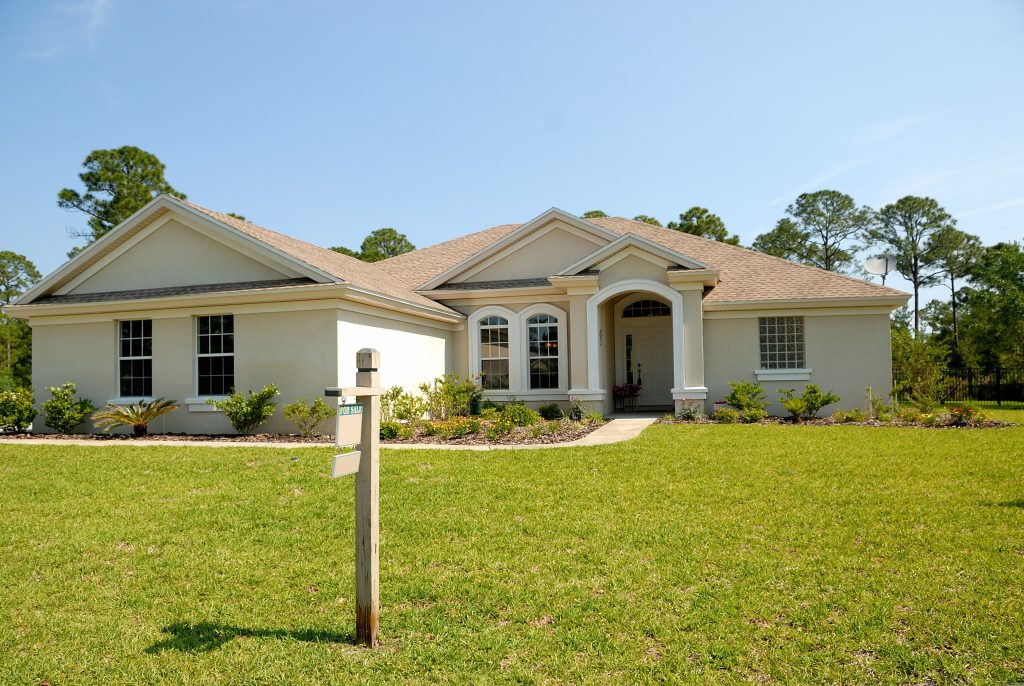If you're a South Florida homeowner, you know that timing a roof replacement is critical. The best and most reliable window for this major project is during the dry season, which typically runs from late November through April.
Scheduling your replacement during this period provides the stable, predictable weather necessary for a high-quality installation. This drastically reduces the risk of sudden downpours that can cause delays, compromise materials, and interfere with the crucial sealing process, ensuring your new roof is ready to withstand Florida's harsh climate.
Your Quick Guide to Florida Roof Replacement Timing
Choosing the right time for a roof replacement in Florida is more than just picking a date; it's a strategic decision that directly affects the quality, cost, and longevity of your new roof. Scheduling during the dry season is an actionable step you can take to guarantee the best outcome.
During this period, the lower humidity and minimal rain allow roofing adhesives and sealants to cure properly. This creates a powerful, watertight barrier ready to face the intense summer rains and hurricane season. However, this ideal weather window is also peak season for roofers.
This means your decision comes down to two key factors:
- Optimal Weather: Late fall, winter, and early spring offer low humidity and less rain, which are essential for a flawless installation.
- Contractor Availability: High demand during the dry season means you must plan ahead to avoid long waits and premium pricing.
Here is an actionable planner to help you make the best decision for your home.
South Florida Roof Replacement Seasonal Planner
Use this table to weigh the pros and cons and decide on your project timeline.
| Season | Key Advantage | Primary Challenge | Your Action Plan |
|---|---|---|---|
| Dry Season (Nov–Apr) | Stable Weather. Ensures a high-quality, uninterrupted installation with proper material curing. | High Demand. Peak season means contractors are busy, and prices may be higher. | Book 3-4 months in advance. This secures a top-rated contractor and locks in better pricing before the rush. |
| Wet Season (May–Oct) | More Availability. Contractors may have more open schedules, and you could find better pricing. | Unpredictable Weather. Daily rain can cause major delays and compromise the roof's seal. | Only for emergencies. If you must proceed, demand a written weather contingency plan from your contractor. |
Ultimately, planning is your most powerful tool. A proactive approach not only ensures a better result but also protects your investment.
This quick visual guide sums it all up, showing why being proactive is the smartest move you can make.

The takeaway is simple: replacing your roof proactively during the dry season is a smart investment. It helps you avoid the stress of emergency leaks, improves your home's energy efficiency, and prevents a small issue from becoming a major disaster. A strategic approach ensures you get the best outcome for your money.
Why Florida Weather Changes the Rules for Roofing
In other regions, the timing for a roof replacement is straightforward. Here in South Florida, our extreme climate turns it into a high-stakes calculation. The weather doesn't just suggest the best time for a new roof; it demands it. Your roof is under constant assault from a unique combination of environmental forces.
Think of your roof as the first line of defense. If that defense is built during the wrong season, it can be compromised from day one, turning a wise investment into a future liability. An improperly timed installation risks trapping moisture and preventing a perfect seal, leaving your home vulnerable.
Florida's Unique Roofing Adversaries
Understanding these local challenges is the first step toward protecting your home effectively. South Florida’s environment presents a specific set of threats that impact both roofing materials and the installation itself.
- Relentless UV Radiation: The intense Florida sun bakes your roof daily, breaking down materials at a chemical level. This makes them brittle, weak, and less effective over time. Actionable Tip: Choose materials with high UV-resistance ratings specifically designed for southern climates.
- Extreme Humidity: High humidity is a major threat during installation. Moisture can become trapped under new materials, leading to mold and preventing sealants from curing properly. Actionable Tip: Schedule installation for low-humidity days, a key benefit of the dry season.
- Corrosive Salt Spray: For coastal homes, salt in the air accelerates rust and decay on metal components like flashing, gutters, and fasteners. Actionable Tip: Opt for corrosion-resistant materials, such as aluminum or specially coated steel, for all metal components.
These three forces work together to weaken your roof's defenses. A new roof installed in the high heat and humidity of a Florida summer may never achieve a proper seal, leaving it vulnerable from the moment the job is finished.
The High Cost of Bad Timing
Attempting a roof replacement during South Florida's volatile summer is a significant gamble. Daily thunderstorms can appear with little warning, potentially soaking your home's exposed structure and causing immediate water damage.
The real danger, though, is in the details you can't see. When adhesives and sealants are applied in high humidity, they often fail to cure correctly. This creates a weak bond that simply can't handle the constant expansion and contraction from our intense heat, leading to premature leaks and even voiding your warranty.
This is why choosing the best time for roof replacement is a critical component of a successful project, not just a matter of convenience. A poorly timed installation can lead to failed seals, trapped moisture, and a roof that fails years before it should.
Navigating Roofing Projects During Hurricane Season
Scheduling a roof replacement in South Florida between June and November is extremely risky. It’s not just hurricanes you have to worry about; it's the daily pop-up thunderstorms that halt work and leave your home exposed.
The constant threat of rain means your home's underlying structure could be left open to the elements. A single downpour can saturate the wooden decking, leading to moisture damage and rot before the new roof is even installed. This is why many contractors are hesitant to start a full tear-off during this period.
The Hidden Dangers of Humidity
Even on rain-free days, the wet season's high humidity poses a major problem. Roofing adhesives and sealants require a dry environment to cure and form a strong, permanent bond. When the air is saturated with moisture, the curing process is compromised.
This results in sealants that never fully set, creating weak spots across your new roof. It's a direct path to premature leaks, roof failure, and potentially voided material warranties—a costly outcome that underscores why the wet season is not the best time for roof replacement.
An Action Plan for Emergency Replacements
Sometimes, a severe storm or sudden leak forces your hand, making an emergency replacement during hurricane season unavoidable. If you're in this situation, you must take decisive action to protect your home.
- Demand a Weather Contingency Plan: Before signing anything, ensure the contract specifies exactly how the crew will secure the site and protect your exposed roof if a storm hits. Get this plan in writing.
- Verify Insurance Coverage: Confirm your contractor’s liability insurance explicitly covers water damage from mid-project weather events. This is your critical financial safeguard.
- Request Modern Materials: Ask your roofer to use advanced, quick-drying sealants and synthetic underlayments. These materials are engineered to perform better in humid conditions and can significantly reduce installation risks.

With extreme weather on the rise, this level of planning is essential. Storm-related damage now accounts for over 22% of all residential roofing replacements, pushing many homeowners into these urgent projects.
Tackling a hurricane season replacement isn't about eliminating risk—it's about managing it. You need a contractor with a bulletproof plan for the worst-case scenario, one who will protect your home and your family every step of the way.
Following these steps allows you to regain control in a high-stress situation, ensuring you are prepared for Florida's unpredictable weather.
The Dry Season Advantage for a Flawless Installation

For South Florida homeowners, scheduling a roofing project during the dry season is the single most impactful decision you can make. This period, from late fall to early spring, provides the ideal conditions for a durable, long-lasting roof, based on the science of how roofing materials work.
The adhesives and sealants used on your roof need low moisture and moderate heat to form an unbreakable, watertight bond. The dry season delivers these conditions, ensuring every component—from shingles to underlayment—fuses together perfectly.
The Science of a Perfect Seal
The long-term performance of your roof depends entirely on how well its materials bond. Stable, predictable weather creates the optimal environment for this to happen.
- Optimal Adhesive Curing: The sealant strips on asphalt shingles require sunlight and moderate warmth to activate and fuse the shingles into a single, monolithic shield. The mild, sunny days of the dry season are perfect for this thermal sealing process.
- Zero Trapped Moisture: Low humidity eliminates the risk of moisture getting trapped beneath shingles or between material layers. Trapped moisture is a primary cause of rot, mold, and premature roof failure.
- Material Stability: Extreme summer heat can make asphalt shingles too soft to handle, while a rare cold snap can make them brittle. The cooler, more stable temperatures of the dry season ensure materials remain in optimal condition for installation.
Securing a flawless installation is like fortifying your home in peacetime. You are preparing it to withstand the inevitable onslaught of the rainy season and potential hurricanes.
The Peace of Mind Factor
Beyond the technical benefits, there is a significant reduction in stress. Scheduling your project in the dry season means you won't have to watch the weather forecast anxiously every day.
A project that proceeds without constant weather delays is not only more efficient but also far less stressful for you as a homeowner. You can have confidence that the job is being done right, without any compromises forced by bad weather.
Nationally, the roofing industry is a $59.2 billion market in 2024. However, while most of the country's prime roofing season is late spring to early fall, South Florida's climate flips that schedule. This is why local expertise is so important. To learn more, you can find more information about national roofing market trends and their drivers.
How Seasonal Demand Impacts Your Project Cost
Understanding how timing impacts the cost of your roof replacement is key to managing your budget. In South Florida, the project price is directly tied to seasonal supply and demand.
The dry season is when everyone wants their roof replaced, creating high demand for reputable contractors. Skilled crews get booked months in advance, and this peak demand leads to premium pricing. It's simple economics: with a full schedule, there's little incentive for contractors to offer discounts.
Navigating Peak and Off-Season Pricing
Conversely, some roofing companies may offer discounts during the riskier summer months to keep their crews busy. This can be an opportunity to save money, but it comes with the weather-related risks discussed earlier.
A better strategy is to plan ahead. By scheduling your dry-season installation during the summer or early fall, you can often lock in a lower rate before peak-season demand drives prices up. This gives you the best of both worlds: ideal weather without the premium cost.
The most significant price surge occurs immediately after a hurricane. Demand for labor and materials skyrockets, and prices can jump by 20-30% or more, virtually overnight. This is why a proactive roof replacement is always the most financially sound decision.
Broader Economic Influences on Your Roof
Local weather isn't the only factor. The cost of your roof is also influenced by broader construction industry trends. A booming housing market increases demand for roofing materials and skilled labor. For example, a significant 16.7% increase in US construction starts in 2022 put pressure on the supply chain for everyone. You can read more about how global construction trends impact the roofing industry to understand the complete picture.
This demand raises the price of everything from shingles to labor. By being aware of these market forces, you can better plan the best time for roof replacement financially. A proactive approach to your new roof is the most effective way to shield yourself from these sudden price increases.
Your Action Plan for Scheduling a Roof Replacement
Knowing the best time to replace your roof is only the first step. Turning that knowledge into a concrete plan ensures a smooth, successful project. The best time for roof replacement ultimately depends on balancing Florida’s weather, your budget, and contractor availability.
Follow this step-by-step plan to take control of the process and move forward with confidence.
Start with a professional inspection. This is the most crucial first step, as it provides a clear assessment of your roof's condition and the urgency of the replacement. An experienced roofer can identify minor issues before they become major problems, giving you valuable time to plan effectively.

From Quotes to Contracts
With a professional assessment, you can begin planning your project with a target season. The key is to act early and avoid last-minute decisions.
- Gather Quotes Early: Begin contacting roofers 3-4 months before your ideal start date. This provides ample time to compare bids and vet contractors without feeling rushed.
- Ask About Weather Protocols: Directly ask potential contractors about their specific procedures for sudden rainstorms. How will they protect your home if a storm appears mid-job? A professional will have a clear, immediate answer.
- Factor in Permitting Delays: Ask contractors for a realistic timeline for local permit approval. This process can add several weeks to your schedule and must be factored into your plan from the beginning.
After selecting a timeline, the next step is choosing a trustworthy roofer. For more general advice, you can review these tips on finding qualified roofing contractors.
The real goal here is to secure your spot with a reputable roofer well before the busy season kicks into high gear. Booking early doesn't just guarantee their availability—it often helps you lock in better pricing before demand sends costs soaring.
By following these steps, you shift from reacting to problems to proactively managing the entire process. A solid plan eliminates guesswork and ensures you get a high-quality roof that will protect your home for years.
Frequently Asked Questions About Florida Roofing

Even with a plan, you might still have a few questions. Getting clear answers to these common concerns is the final step toward feeling completely confident in your roofing project.
Here are actionable answers to the questions we hear most often from homeowners, from handling wet-season emergencies to navigating insurance timelines.
Can I Replace My Roof During Hurricane Season if It's an Emergency?
Yes, but it requires an expert crew and a detailed risk-management strategy. If storm damage or a critical leak forces an emergency replacement in the summer, your contractor's preparedness is paramount.
Your contractor must have a documented plan. This includes using quick-drying materials, carrying comprehensive liability insurance that covers mid-project weather damage, and including a specific weather contingency clause in your contract. This non-negotiable clause must detail exactly how the crew will protect your home if a storm develops.
How Far in Advance Should I Book My Roofing Contractor?
For a dry season replacement (November-April), book your contractor 3 to 4 months in advance. Top-rated companies fill their schedules quickly, and booking early locks in both your project slot and a better price.
If you must schedule during the summer off-season, you may only need a 1 to 2-month lead time. However, it is always a smart move to start the process of getting quotes as early as possible, regardless of the season.
Planning ahead does more than just get you the roofer you want; it puts you in control. When you rush, you risk having to compromise on quality or price. Booking early means your project will be organized, on schedule, and stress-free.
Does My Homeowners Insurance Dictate When I Can Replace My Roof?
Yes, it can significantly impact your timeline. If you are paying for the roof yourself, you have the flexibility to schedule it during the ideal dry season.
However, if your replacement is covered by an insurance claim, your policy will likely have a firm deadline for project completion. This can force the work into the less-than-ideal summer months. Your first action should be to connect your insurance adjuster with your roofer. An experienced contractor will know how to work within the insurance company's timeline while implementing all necessary safety protocols to protect your home.
Ready to schedule your roof replacement with experts who understand the South Florida climate? The team at Exact Roofing provides flawless installations with a commitment to quality and customer peace of mind. Schedule your free, no-obligation inspection today!

